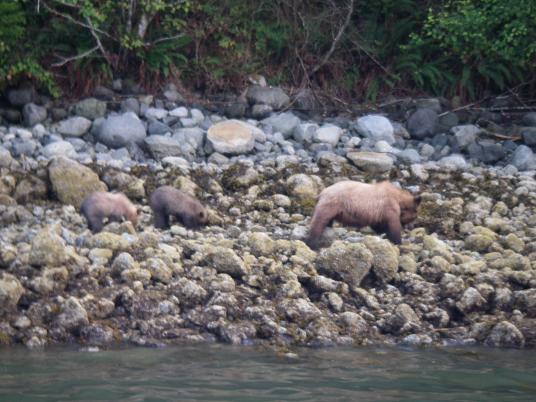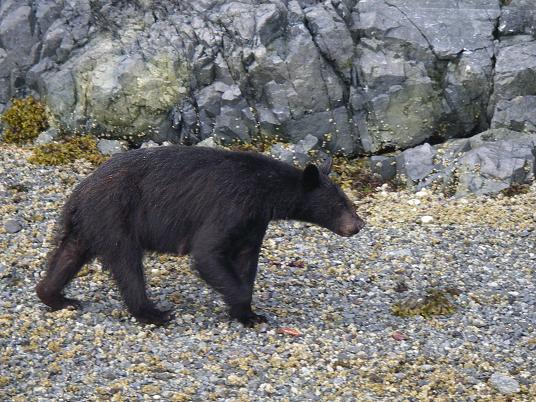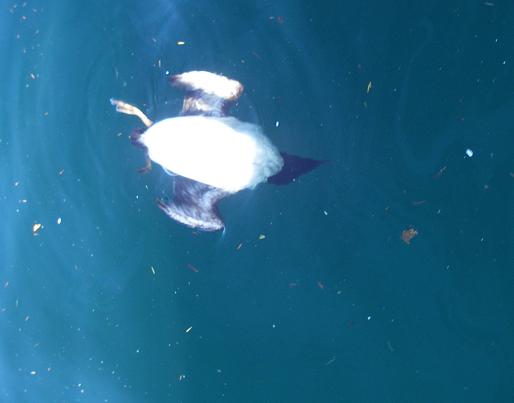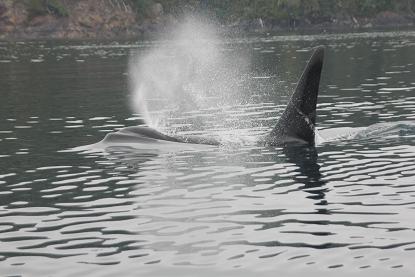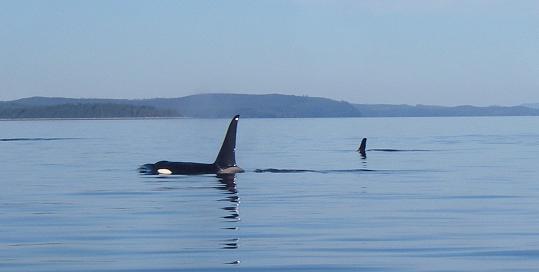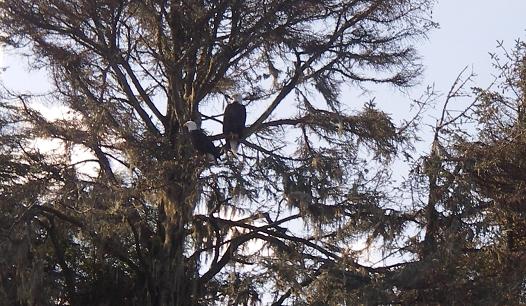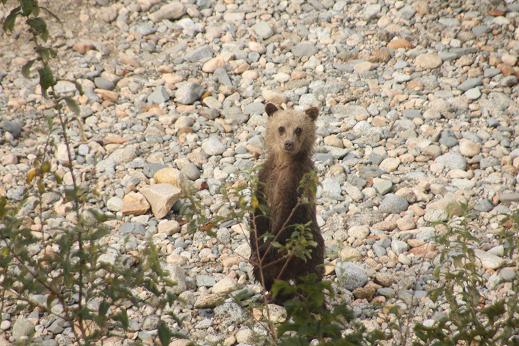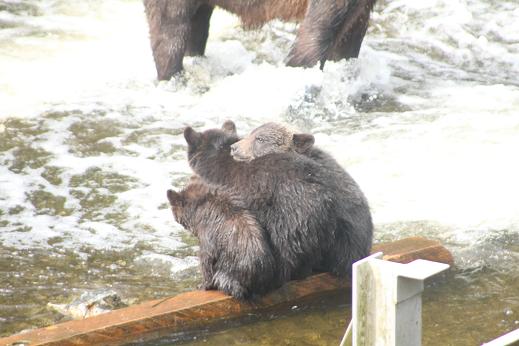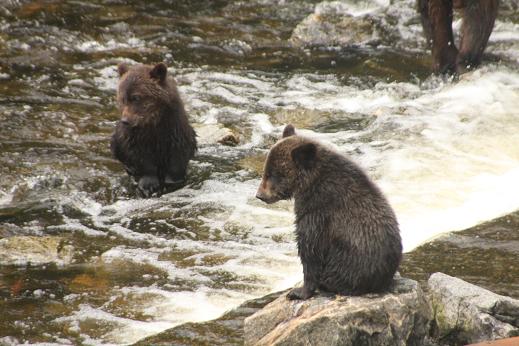Yesterday’s post was a black bear on a whale watching tour while today’s is a grizzly bear on an evening black bear tour. On your first evening in the lodge we go for an hour or so boat ride looking for black bears and other wildlife. I remember this trip as it was the longest evening black bear tour that lasted two and half hours (we did get back before dark but just). We found a mother grizzly and two cubs on the beach and we followed them for over an hour as they slowly made their way along the beach turning over rocks and at time stopping to berries and eat grass above the high tide mark. Our tours do not normally have a tight schedule if we find something interesting we watch.
Grizzly Bear and Wildlife Tour Blog
We offer an exceptional fly-in lodge for Grizzly Bear Watching and Whale Watching in British Columbia.
Learn about What’s happening at the Lodge, view our British Columbia’s Wildlife Report, read our Grizzly Bear Watching Blog and Whale Watching Blog. Learn more about a Day on the River Blog, see Our Tour Guide’s Photos & Blog and Photos from Our Guests.
Black bear on the beach without cub
This black bear mother was spotted on the way to our day’s whale watching tour. It is a good area to find black bears especially if there is a low tide in the morning. This nursing mother (look closely at the photo) was on the beach alone that means she must have left her cub sleeping in the bush the above high water mark. We know she has one cub because we had seen them in this area on the previous day.
Common Murre and Killer Whale Saga
The common murre is a medium-sized waterbird with a black back and head, white underside and a long, slender, pointed bill. Ironically except for the waterbird and bill it also describes an orca / killer whale. On this morning we came upon a lone transient or Biggs orca (they are the mammal eaters). It was odd enough for this orca to be on its own but apparently it travels this way frequently. It was also playing with the murres with unfortunate side effects. It would come up beneath the birds and grab them and then toss them into the air. It would play with them for a while and then find another. It was fascinating to watch but also sad as there were four murres left on the surface.
Killer whale choice
Humpback whale visits out tour boat
The left edge of the photo is a guest trying to get a good picture of a humpback whale, on a tour, that surfaced close to our boat. When the whales are feeding in our area on the BC coast the best action is no action. That means find a herring ball and sit and wait, running after the whales just creates to much disturbance and they tend to move off to another area. We have a number of humpback whales that summer in our viewing area so the problem is often to “guess” which side of the boat will provide the beat picture. I can think of worse problems.
Bald eagles waiting for dinner
Bald eagles are a common sight in our tour area. As one of our guides says to his guests: “I will point out the first ten eagles and after that you are on your own.” This does not mean we don’t stop to get a good photo but that means when the eagle is a little lower down in a tree and not a white spot on the top of a tree. The waiting aspect of the photo is because that is what eagle do. They wait for a salmon on the surface or a herring ball to form to provide a “chance” for a meal.
A Meerkat?
The dark raccoon eyes and the upright poise made me think of the Meerkat of South Africa. This cub, one of three, was passing by the viewing platform we use in Knight Inlet when one of the guests made a noise when a bench was bumped. The others kept moving but this one stopped and looked in our direction for a minute or so before moving to catch up with it’s family. The viewing platforms are raised about three meters (yards) above ground level and grizzly bear’s frequently glance our direction as it is not normal for them to have something above them.
Lean Grizzly Bears waiting for salmon
It is September 1st and these grizzly bears are looking like they need a good meal. And they do because not many salmon have arrived in the river. A late arrival of salmon to Knight Inlet’s Glendale River means that the bears have less time to fatten for hibernation. By early October the grizzlies were in better shape but it will still be an interesting winter for some of the younger bears and only next spring will we may see the result of a poorer salmon run.
Grizzly Bear Cubs Waiting 2 of 2
These grizzly bear cubs have decided that comfort is in numbers and body heat is conserved in a huddle. Yes these cubs are from the same mother and one is very small. Unfortunately it did not survive to the end of our viewing season which was mid October. Our guest are frequently reminded that this is not a zoo rather we are viewing wildlife in their natural habitat and nature is not forgiving.
Grizzly Bear Cubs Waiting 1 of 2
For some reason grizzly bear cubs will try to avoid getting wet. In the spring when the cubs are on the beach and are required to enter the water it is often necessary for the mother to go ahead and leave them behind to force then to swim to join her further along the beach’s of Knight Inlet. In this case it is early September and the cubs still prefer to stay dry. It may be that their body fat level is not enough to overcome the cold water and this thought is reinforce by tomorrow’s post….
